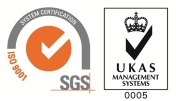Leak Testing: High Vacuum Methods
Explore the Leak Testing Section
Leak Testing is used to ensure quality, tested and proven parts are supplied into the market. The use of leak testing equipment eliminates failures in the field.
Explore this section to find out more about the how TQC can help you with your leak testing requirements
- Overview
- Air Decay
- Helium
- Other Test Methods
- Leak Testing Services
- Standard Equipment
- Case Studies
- Automotive Brake Leak and Flow Testing
- Automotive Bedplate Leak Test Machine
- Battery Tray Leak Test Machine
- Chilled Beam Leak Test
- Flexible Leak Test Facility
- Fuel Tank Leak Testing
- Helium Leak Test Bench
- Helium Leak Testing of Automotive Fuel Pipes
- High Pressure Audit Leak Testing System with Datalogging
- High Speed Leak Testing of Pipe Fittings using Air and Helium
- High Speed Leak Testing of Plastic Vial for the Medical Industry
- Leak Test Facility for Water Valves
- Leak Test Cell with Robotic Handling
- Casting Leak Testing of Engine Blocks
- Medical Filter Leak Test Machine
- Medical Showerhead Leak Test Machine
- Plastic Fuel Rail Leak and Burst Test Machine
- Plastic Sump Pipe Leak Test and Assembly
- Small Medical Device Leak Test Machine
- Twin Station Leak Test Machine for Oils Sumps
- V6 Cylinder Head Leak Test Machine
- V6 Engine Leak Test Machine
- V8 Cylinder Head Leak Test Machine
- V8 Engine Block Leak Test Machine
- Valve Block Leak Test Machine
- Vauxhall Leak Test Machine
- Weapon Leak Test Machine
TQC has a depth of experience applying high and ultra-high vacuum testing to a range of parts.
TQC has been involved in 2 types of test using high vacuum testing.
- The first consists of pulling almost complete vacuum of below 5 x 10-3 mbar absolute and looking for a detectable pressure increase.
- The second is used when trying to detect the presence of liquid or moisture. It uses the physical property of liquids (and some solids) that vaporise at room temperature and very low pressure. In the case of water (or saline solution) the water will vaporise at just below 3 mbar absolute pressure. The boiling of the water and production of large amounts of vapour can be detected with special pressure transducers when plotting pressure against time as vacuum is applied to the test part in a vacuum chamber.
There are some specific design issues to overcome when using these techniques. Clearly, the parts must be dry and clean, if they are not, the outgassing from the volatiles within the chamber are significant. One also has to be careful about any assembly or sealing greases being used. Vacuum grease has to be used as it is specially formulated not to vaporise at such low pressure.
In the case of trying to test leakage below 5 x 10-3 mbar absolute it was clear that any outgassing needed to be removed quickly, this required the system being engineered with an additional turbo pump backed up by the rotary vane pump to take the pressure well below the leakage pressure threshold of 5 x 10-3 mbar absolute. This also required special instrumentation for measuring pressure. Here is an example of a standard helium leak test bench adapted to also do a high vacuum test.
Many medical devices contain or are packaged within a liquid; examples include some diagnostic units, disposable contact lenses and gel dispensers. The problem here is to find a leak-test technique that is not affected by the liquid plugging the leak path because liquid can easily plug a hole of 10–15 µm in size. A hole of this size in smaller parts is detectable by using air-pressure decay; but a leak can be detected only until liquid comes into contact with the opening of the hole.
There are two other potential techniques that can be used to detect a leak path in these types of medical device. One employs helium leak detection because often the helium will find its way through the liquid. The other uses high vacuum and boils off liquid as it emerges from the leak path. Even when there is a small amount of liquid, this will create a massive amount of vapour if the pressure is sufficiently reduced. Typically at approximately 98% vacuum, water, alcohols and some oils will boil at ambient temperatures. By monitoring the pressure as the vacuum is applied, the corresponding graph (see below) will show that the curves are different for sealed and leaking parts. This has been demonstrated to work on liquid-filled blister packs containing contact lenses where the leakage of the fluid to the outside of the pack is the only way to detect leakage.
To find out more about how we can help you with your leak testing requirements:
We build all machines in-house, applying our 25+ years experience in specialised test and automated handling machines experience to the engineering projects we undertake. We offer customer support, backup and service call-out for all projects, whatever the size.
Get in touch with us to discuss your requirements and we will be happy to offer our professional advice and visit you at your site.
- Contact us online
- Email us or call us on 0115 950 3561
